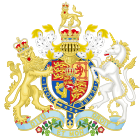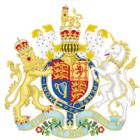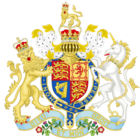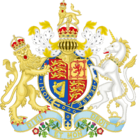Police burgh facts for kids
A police burgh was a special type of town in Scotland. These towns chose to set up their own local government system. This system helped them manage important services like street lighting, cleaning, and policing. Police burghs existed for a long time, from 1833 until 1975. They were a way for communities to take charge of their own improvements.
Contents
The First Police Burghs: 1833 Act
Quick facts for kids Burgh Police (Scotland) Act 1833 |
|
|---|---|
| Act of Parliament | |

|
|
| Citation | 3 & 4 Will. 4. c. 46 |
| Territorial extent | Scotland |
The very first police burghs were created by a law called the Burgh Police (Scotland) Act 1833. This law allowed existing towns, known as royal burghs, burghs of regality, and burghs of barony, to adopt new powers. These powers included paving streets, adding lights, cleaning areas, providing water, and improving their communities.
This Scottish law was passed two years before a similar law in England and Wales. That law was called the Municipal Corporations Act 1835.
How a Police Burgh Was Formed
For a town to become a police burgh, its residents had to apply for a vote. If three-quarters (75%) of the eligible voters said "yes," the town could adopt the new system. People could even choose which specific parts of the law they wanted to use.
Setting the Boundaries
Each new police burgh needed clear boundaries. These boundaries could extend up to about 914 meters (1000 yards) beyond the old town limits. Nearby towns were allowed to join together to form one police burgh. The agreed-upon boundaries were officially recorded in the local sheriff court.
Who Ran the Police Burghs?
A group of elected officials called "police commissioners" managed the police burgh. There were usually between five and twenty-one commissioners. The main leader of the old town, often called the chief magistrate, automatically became a commissioner. These commissioners were elected every year.
What Could Commissioners Do?
The commissioners had important jobs. They could collect money from the town's residents to pay for various services. These services included:
- Hiring staff like collectors, clerks, police officers, and watchmen.
- Buying land for town improvements.
- Lighting streets with gas or other methods.
- Paving and cleaning the streets.
- Supplying water and gas to homes.
- Working to prevent the spread of diseases.
New Parliamentary Burghs: 1833 Act
| Act of Parliament | |

|
|
| Citation | 3 & 4 Will. 4. c. 77 |
|---|---|
| Territorial extent | Scotland |
| Dates | |
| Royal assent | 28 August 1833 |
Later in 1833, another law was passed: the Parliamentary Burghs (Scotland) Act 1833. This law gave local government powers to thirteen new towns. These towns had recently gained the right to elect Members of Parliament because of the Reform Act 1832.
The people in these towns could now elect their own magistrates (local judges) and councillors. They could also adopt a "general system of police," similar to the police burghs. The towns that became these new municipalities were:
How Police Burghs Changed Over Time
Over the years, several new laws updated how police burghs worked. These changes made it easier for towns to become police burghs and gave them more responsibilities.
| Burgh Police, etc. (Scotland) Act 1847 | |
|---|---|
| Act of Parliament | |

|
|
| Citation | 10 & 11 Vict. c. 39 |
| Territorial extent | Scotland |
The General Police (Scotland) Act 1847 made it easier to adopt the police system. Now, only two-thirds (about 67%) of householders needed to vote in favor, instead of three-quarters. This act also allowed the parliamentary burghs to adopt the police act.
| Police (Scotland) Act 1850 | |
|---|---|
| Act of Parliament | |

|
|
| Citation | 13 & 14 Vict. c. 33 |
| Territorial extent | Scotland |
The Police of Towns (Scotland) Act 1850, also known as Lock's Act, made it even simpler to create police burghs. Now, any "populous place" could become a burgh. A "populous place" meant any town, village, or area with at least 1,200 people that wasn't already a burgh. Only a simple majority (more than half) was needed to vote for the act.
| General and Police Improvement (Scotland) Act 1862 | |
|---|---|
| Act of Parliament | |

|
|
| Citation | 25 & 26 Vict. c. 101 |
| Territorial extent | Scotland |
| Dates | |
| Royal assent | 7 August 1862 |
The General and Police Improvement (Scotland) Act 1862 re-explained the powers of police burghs. It also created a way for burgh commissioners to ask the county sheriff (a local judge) to expand their town's boundaries.
| Burgh Police (Scotland) Act 1892 | |
|---|---|
| Act of Parliament | |

|
|
| Citation | 55 & 56 Vict. c. 55 |
| Territorial extent | Scotland |
| Dates | |
| Royal assent | 28 June 1892 |
The Burgh Police (Scotland) Act 1892 replaced all the older police laws for burghs. It made each burgh a single governing body for both police and town matters. Any remaining old burghs that hadn't adopted the police acts were effectively ended. The population needed to become a burgh was raised to 2,000 people. Police commissioners were now called "councillors," led by a magistrate.
The Town Councils (Scotland) Act 1900 officially renamed the governing body of a burgh as "the provost, magistrates, and councillors." Some larger burghs continued to use the title lord provost for their leader.
| Burgh Police (Scotland) Act 1903 | |
|---|---|
| Act of Parliament | |

|
|
| Citation | 3 Edw. 7. c. 33 |
| Territorial extent | Scotland |
| Dates | |
| Royal assent | 14 August 1903 |
The Burgh Police (Scotland) Act 1903 added more rules, especially about building within a burgh. Towns had to keep a record of building plans (like today's planning permissions). The town council issued building permits, and a surveyor made sure rules were followed. New powers were given for maintaining sidewalks and public trash cans. Rules were also set for building heights, room sizes, and street widths. The act also covered things like vehicle lights, licenses for billiard halls and ice cream shops, and fines for littering.
Finally, the Local Government (Scotland) Act 1929 sorted all burghs, whether royal or police, into "large" and "small" categories. This changed how they were managed.
See also

